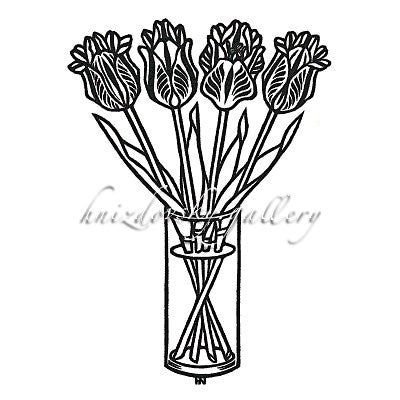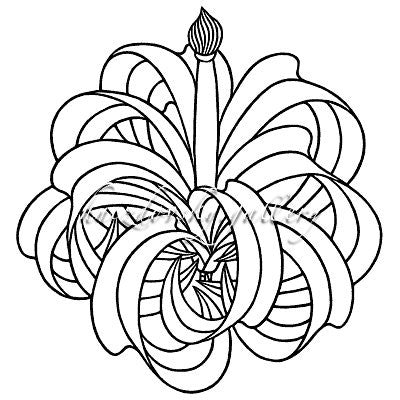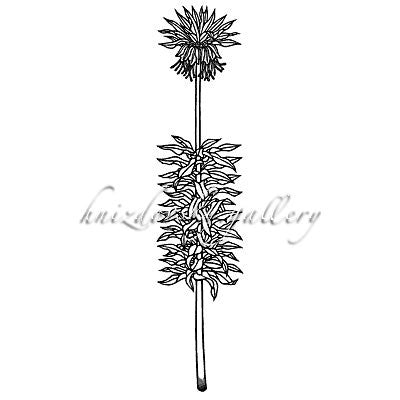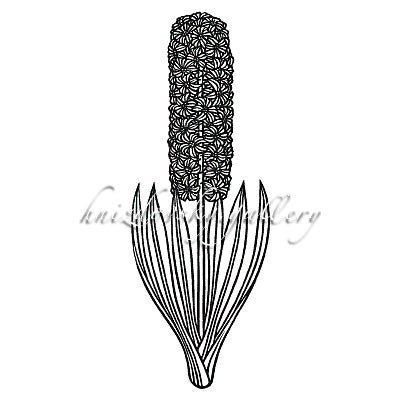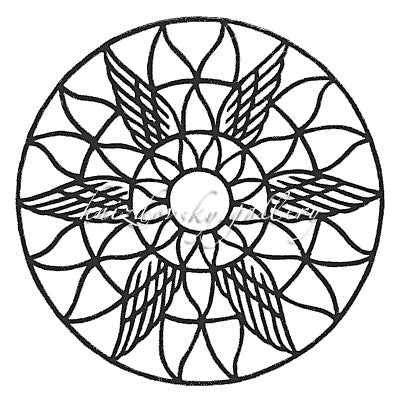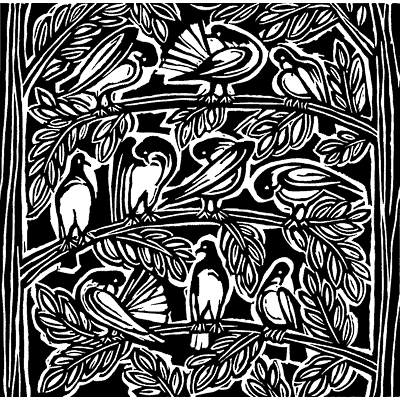Flowers
Hnizdovsky spent almost every Sunday at the botanical gardens of New York City, sketching all day. Hnizdovsky's garden in New York City had a plethora of flowers and trees as well. It is well known among Hnizdovsky's friends and collectors, that all floral bouquets that came into the house went straight upstairs into his art studio, never being allowed onto the dining room table.
-
#052 Thistle, woodcut, 1964, 7.625" x 4.5" (image size)
Regular Price $1,200.00 USDRegular PriceUnit Price / per -
#334 Geranium, woodcut, 1984, 9" x 14.125" (image size)
Regular Price $1,500.00 USDRegular PriceUnit Price / per -
#232 Yellow Chrysanthemum, linocut, 1976, 18" x 7" (image size)
Regular Price $1,200.00 USDRegular PriceUnit Price / per -
 No Longer Available
No Longer Available#231 Japanese Chrysanthemum, linocut, 1976, 20" x 9" (image size)
Regular Price $1,200.00 USDRegular PriceUnit Price / per -
#100 Three Dahlias, woodcut, 1970, 8.5" x 8" (image size)
Regular Price $1,800.00 USDRegular PriceUnit Price / per -
#336a Periwinkle, woodcut, 1984, 13" x 13" (image size) (Hand Colored)
Regular Price $3,500.00 USDRegular PriceUnit Price / per -
#371 Lily of the Valley, etching, 1981, 9.125" x 7.125" (image size)
Regular Price $2,500.00 USDRegular PriceUnit Price / per -
#079 Circle of Growth, woodcut, 1967, 6.5" x 6.5" (image size)
Regular Price $1,200.00 USDRegular PriceUnit Price / per -
 No Longer Available
No Longer Available#056 Dandelion, woodcut, 1964, 7.125" x 5" (image size)
Regular Price $950.00 USDRegular PriceUnit Price / per -
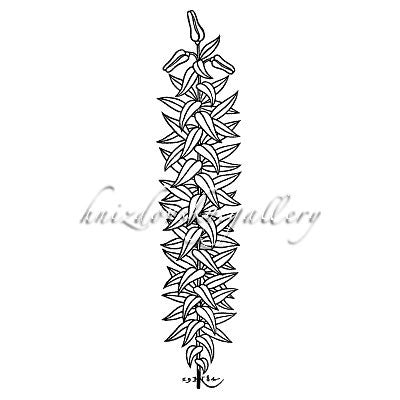 No Longer Available
No Longer Available#333 Lily, woodcut, 1984, 18" x 4" (image size)
Regular Price $1,200.00 USDRegular PriceUnit Price / per -
#320 Zinnia, woodcut, 1983, 2.875" x 2.875" (image size)
Regular Price $500.00 USDRegular PriceUnit Price / per -
#269 Chrysanthemum, woodcut, 1978, 6.625" x 2.625" (image size)
Regular Price $750.00 USDRegular PriceUnit Price / per -
#265 Four Tulips, woodcut, 1978, 6.5" x 4.625" (image size)
Regular Price $1,200.00 USDRegular PriceUnit Price / per -
#162 Early Tulips, linocut, 1973, 10.75" x 12.88" (image size)
Regular Price $950.00 USDRegular PriceUnit Price / per -
#099 Onion, woodcut, 1970, 7.25" x 7" (image size)
Regular Price $850.00 USDRegular PriceUnit Price / per -
#159 Narcissus, hand watercolored woodcut, 1973, 13" x 10" (image size)
Regular Price $1,800.00 USDRegular PriceUnit Price / per -
#164 Allium, linocut, 1973, 19" x 18" (image size)
Regular Price $1,000.00 USDRegular PriceUnit Price / per -
#163 Moses in a Boat, linocut, 1973, 13" x 13" (image size)
Regular Price $1,800.00 USDRegular PriceUnit Price / per -
#140 Fritillaria Imperialis, linocut, 1972, 21.5" x 9.75" (image size)
Regular Price $1,800.00 USDRegular PriceUnit Price / per -
#129 Lilium, woodcut, 1972, 9" x 3" (image size)
Regular Price $950.00 USDRegular PriceUnit Price / per -
#124 Chrysanthemum, woodcut, 1972, 8.25" x 7" (image size)
Regular Price $950.00 USDRegular PriceUnit Price / per -
#123 Hyacinthus, woodcut, 1972, 9.5" x 3.5" (image size)
Regular Price $950.00 USDRegular PriceUnit Price / per -
#364 Dandelion, etching, 1971, 6.25" x 6.875" (image size)
Regular Price $1,200.00 USDRegular PriceUnit Price / per -
#336 Periwinkle, woodcut, 1984, 13" x 13" (image size)
Regular Price $1,800.00 USDRegular PriceUnit Price / per -
#159 Narcissus, woodcut, 1973, 13" x 10" (image size)
Regular Price $1,800.00 USDRegular PriceUnit Price / per












